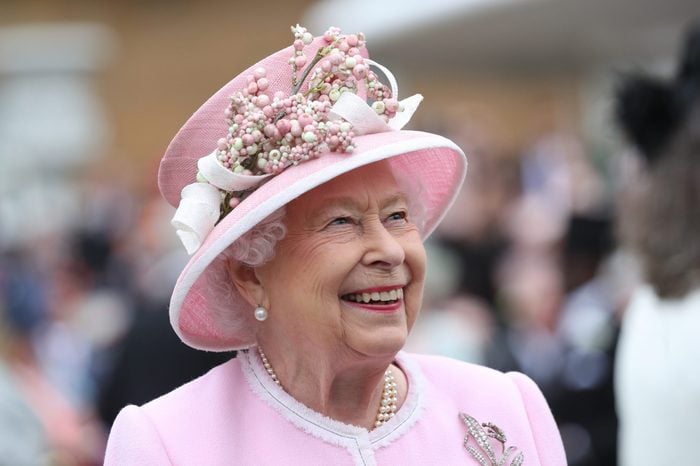
Editor’s note: Queen Elizabeth II, Britain’s longest-reigning monarch, who sat on the throne for 70 years, has died at 96 years old. In a statement on Sept. 8, 2022, the Royal Family website writes, “The Queen died peacefully at Balmoral this afternoon. The King and The Queen Consort will remain at Balmoral this evening and will return to London tomorrow.” The Reader’s Digest team sends condolences to the royal family and all of Britain at this time as we honor her life and legacy.
The queen of hearts
Princess Elizabeth never expected to become queen. Even when she became first in line to the throne, she didn’t think she’d have to assume the role of monarch for a long time. But after her father died early, young Queen Elizabeth took the throne at just 25 years old, dedicating her entire life, “whether it be long or short,” in service to her country. As it turns out, it was the former, and Queen Elizabeth II ruled for 70 years, until her death on Sept. 8, 2022. At the time of her death, she was perhaps more beloved than ever—so much so that many people don’t want to think about what happens now that the Queen has died or her funeral. Find out- where is Queen Elizabeth buried.
But even if you’ve seen The Crown, the Netflix series about her life, you probably don’t know the real story behind this famously tight-lipped royal. There’s the little-known history behind her royal family tree, the true love story of Queen Elizabeth and Prince Philip, and all the sweet details about Queen Elizabeth’s grandchildren. Let’s take a closer look at the life and reign of Queen Elizabeth II.
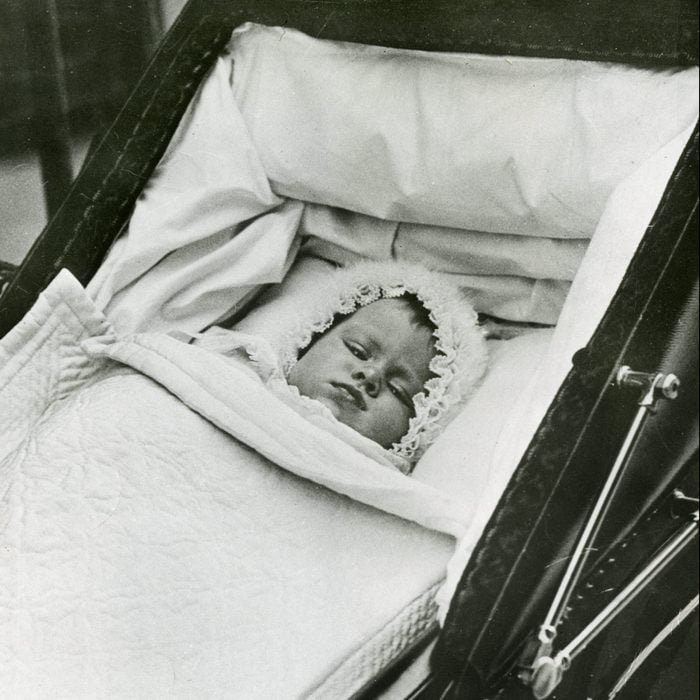
She was born in London
Elizabeth was born on April 21, 1926, at 17 Bruton Street in Mayfair, London, just off Berkeley Square. When she was born, she was third in line to the throne, after her uncle, Edward, Prince of Wales and her father, Albert, the Duke of York. She was named after her mother, the Duchess of York, who was also called Elizabeth. As a small child, Princess Elizabeth lived at 145 Piccadilly in London, and White Lodge in Richmond Park on the outskirts of London. When the future queen was four years old, her sister, Margaret, was born; and when she was six, the family moved to Royal Lodge in Windsor Great Park as their country home. Her family was close-knit, and her life—through privileged—was relatively quiet.
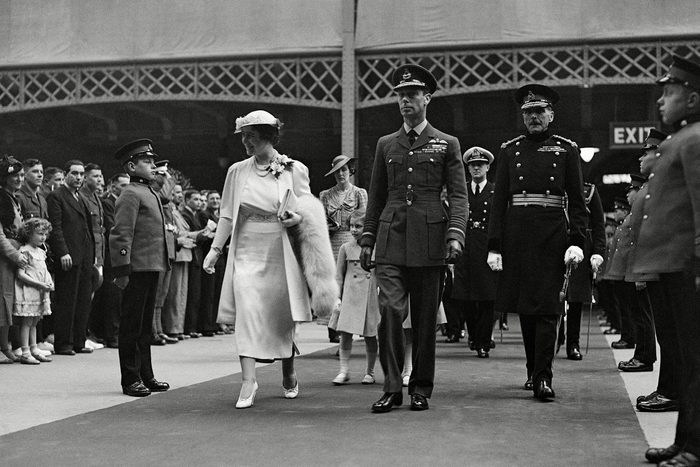
Her father ascended to the throne after a scandal
Everything changed when Queen Elizabeth’s father, King George VI, took the throne. “In 1936, Queen Elizabeth’s uncle became King as Edward VIII, but his reign lasted barely a year, and he was never crowned,” explains historian, author, and former BBC news producer Tony McMahon. “In December that year Edward abdicated over his controversial decision to marry an American divorcee, Wallis Simpson. This moved the line of succession to his brother [Elizabeth’s father], who became George VI.” Simpson was still legally married to her second husband when the relationship first began, adding to the controversy, and the abdication became the biggest constitutional crisis in modern royal history.
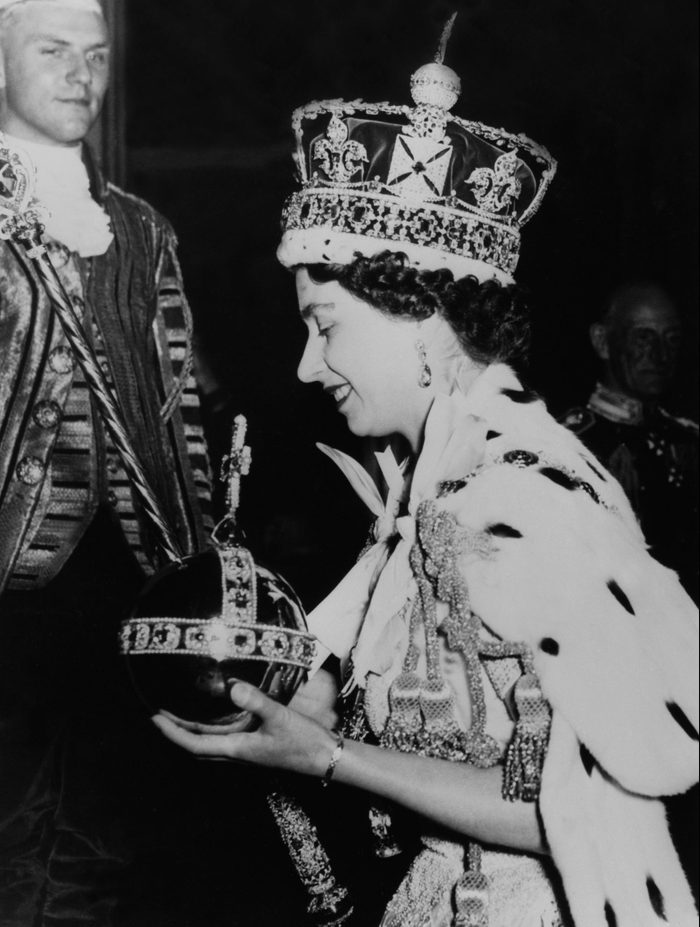
Elizabeth unexpectedly became heir to the throne
For Elizabeth personally, the abdication and subsequent royal family scandal changed the course of her life forever. “George’s daughter Elizabeth instantly became the next monarch in waiting,” McMahon says. “Her every move would now be the focus of political scrutiny and media attention.” But her upbringing allowed her to take on this transition with grace. “We don’t often talk about ‘duty’ nowadays, but Elizabeth was imbued with the virtue from birth—her mother called it le devoir, the duty you owe yourself and the world around you,” says Bryan Kozlowski, author of Long Live the Queen: 23 Rules for Living from Britain’s Longest-Reigning Monarch. “And as a girl, it meant Elizabeth was expected to do things that weren’t always fun or comfortable or personally fulfilling, like visiting hospitals or standing for hours during tedious ceremonies. Nothing prepared her better for her future role as queen.”
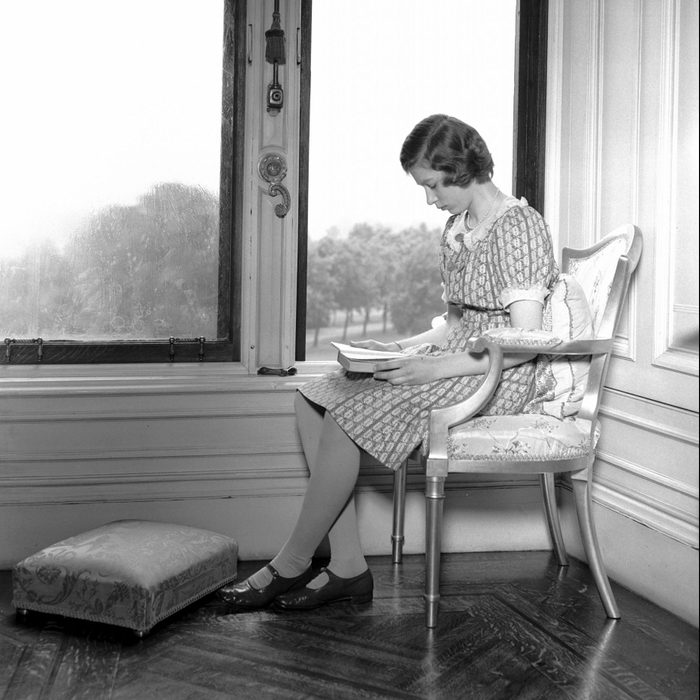
She never went to school
Princess Elizabeth never attended a public or private school, and she doesn’t have a college degree—in fact, one of the facts you didn’t know about the British royal family is that Elizabeth’s grandson, Prince William, was the first royal not to start their education at the palace. But Elizabeth still got an education from her tutors at home. “Queen Elizabeth was homeschooled as was normal for a princess at that time,” McMahon says. “The Vice-Provost of Eton College, Henry Marten, taught Elizabeth constitutional history to prepare her for the future role as monarch. He guided his young charge on both the powers and limitations of being a modern queen.” She also had the Archbishop of Canterbury as a religion teacher, and became fluent in French, which she learned from her French and Belgian governesses. This skill later helped her as monarch in communicating with other world leaders. She also studied art and music, and became a champion swimmer.

She was a Girl Guide and a Sea Ranger
The outdoorsy Princess Elizabeth started her survival-skills training as a Girl Guide, the U.K.’s version of the Girl Scouts. Her mother was an early supporter of the organization and enrolled Princess Elizabeth when she was 11, along with her sister, Princess Margaret. “Elizabeth joined the Girl Guides to meet other girls her age though a special division that was set up called the 1st Buckingham Palace Company,” McMahon says. Princess Elizabeth can even be seen in a 1943 picture practicing her bandaging skills on her little sister. She also joined the Sea Rangers, a group that teaches girls sailing and other water-based activities.
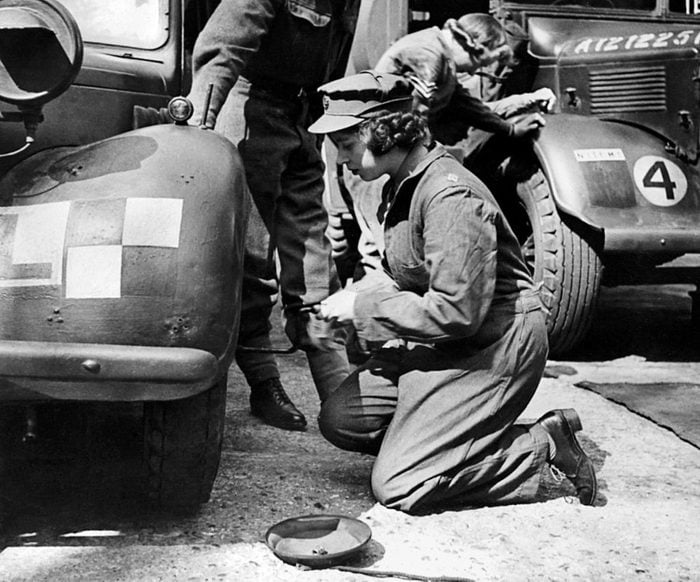
She served in World War II—and snuck out of the palace on VE Day
For those wondering what the British royal family actually does, their early duties are often in the military. For Elizabeth, her work in the Girl Guides and Sea Rangers prepared her for such military service. “Famously, she joined the Auxiliary Territorial Services during World War II doing her bit to raise morale during the Blitz,” McMahon says. She signed up when she turned 18 in 1944 and worked as a mechanic and truck driver. Her service makes her the only current living head of state to have served in World War II, and the only female member of the royal family to have entered the military.
Amazingly, Elizabeth’s ATS uniform allowed the princess to go incognito on the streets of London with her sister, Margaret, on Victory in Europe (VE) Day, May 8, 1945. She recorded her memories of the night for the BBC in 1985: “I remember we were terrified of being recognized, so I pulled my uniform cap well down over my eyes,” Elizabeth said. “We cheered the king and queen on the balcony [of Buckingham Palace] and then walked miles through the street. I remember lines of unknown people linking arms and walking down Whitehall, all of us just swept along on a tide of happiness and relief…I think it was one of the most memorable nights of my life.”
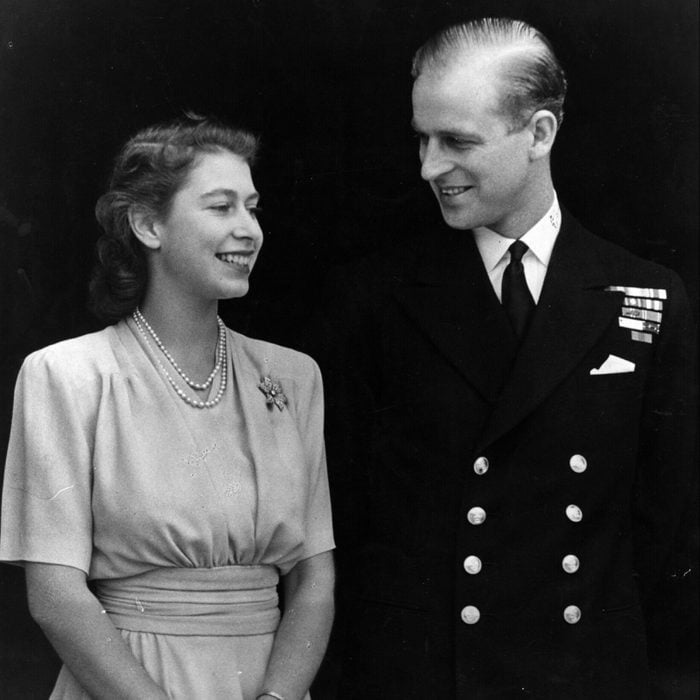
She was only a tween when she fell in love with her distant cousin
Elizabeth first set eyes on Prince Philip, her third cousin, when she was just 8: Her royal biography says they met in 1934 at the wedding of mutual relatives. But their first real meeting was several years later. “In many ways, the early years of Elizabeth’s relationship with Prince Philip felt like a fairy-tale romance. Elizabeth met [properly]—and by all accounts fell in love with—Philip in 1939 when she was a 13-year-old girl visiting the Royal Naval College with her family, and he was a handsome young cadet,” says Nicoletta Gullace, an associate professor of history at the University of New Hampshire who specializes in modern British history. “Philip, then Prince of Greece and Denmark, entertained Elizabeth and Margaret with games of croquet and showed off his athletic prowess by jumping over a tennis net. Apparently, Elizabeth could not take her eyes off of him, and her governess later recounted that he showed off a good deal.”
After that, the pair wrote to each other and saw each other occasionally, Gullace says. “Elizabeth famously kept a photograph of a bearded Philip during his time serving as a naval officer in the Mediterranean and the Pacific during the Second World War,” she says. “They were able to spend more time together after the war.”
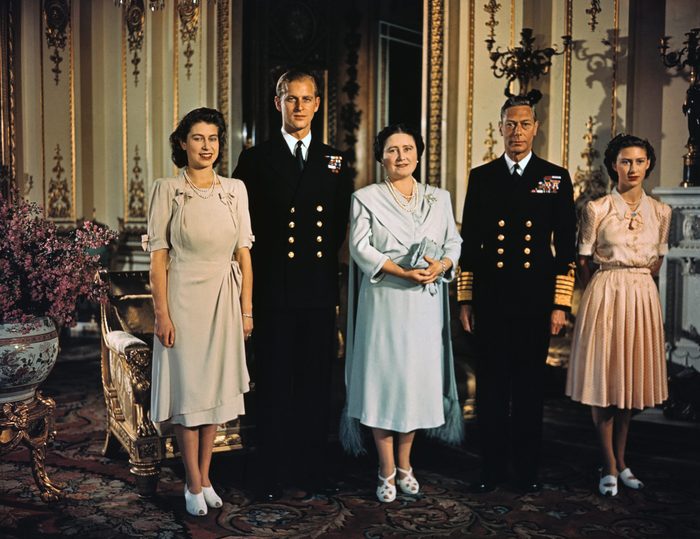
Her family didn’t totally approve of Philip
Philip wasn’t necessarily the ideal choice of husband for the future queen, according to Elizabeth’s family. “The royal family did not entirely approve of Philip because of the poverty of his royal house [he and his family had been exiled from Greece], the affiliation of his siblings with the Nazis [his sisters were married to them], and the feeling that he seemed ‘too German’—the Queen Mother famously referred to him as ‘the Hun,'” Gullace says. “Yet Philip had served in the Royal Navy during the war and despite concern that Philip was from a lesser noble family, the pair was permitted to become engaged in July 1947.”
The simple reason for the match was that Queen Elizabeth and Prince Philip fell in love. “Once their engagement was permitted to go forward, he was allowed to become a naturalized British subject and took the surname Mountbatten,” Gullace says.

She paid for her wedding dress with coupons
Queen Elizabeth II and Prince Philip tied the knot in 1947 when the United Kingdom was recovering from World War II and still had rationing measures in place—not even the future queen was exempt. “Elizabeth dressed in a gown that had to be purchased with war-time rationing coupons,” Gullace says. “A reflection of her popularity was that young women from all over Britain sent her their own coupons, to make sure she had enough for a very beautiful dress. Exchanging rationing coupons was not permitted, but the gesture during a time of scarcity and few luxuries, shows that even as a young princess, Elizabeth was much beloved by her people.” Her tiara also broke right before the ceremony but was luckily fixed in time.
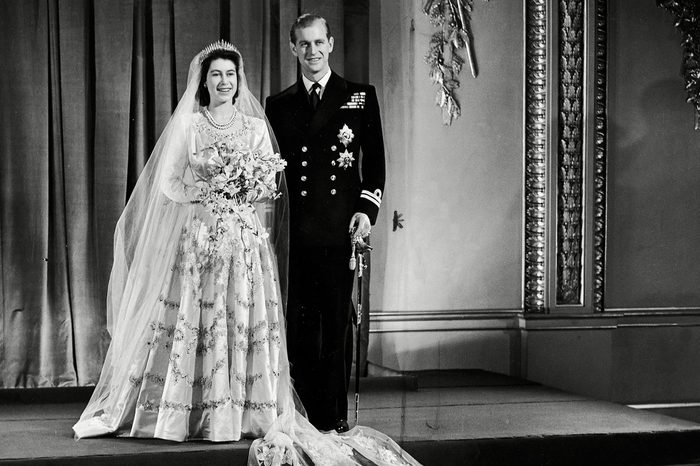
Her 1947 wedding was a landmark moment in British history
After six years of war, England was ready for a happy event, which the royal wedding provided. “In many ways, Elizabeth’s wedding was just a grander version of the weddings of many young women who waited until after the war to wed the servicemen they had loved, agonized over, and supported during the conflict,” Gullace says. The couple married in November 1947 at Westminster Abbey before 2,500 guests, and the ceremony was broadcast over the radio, she says. “They had a reception at Buckingham Palace and enjoyed a nine-foot high wedding cake; they also waved to the audience afterwards from the famous balcony, beginning that matrimonial tradition,” Gullace says. “The princess was radiant with joy, and by all accounts Prince Philip was a ‘Greek Adonis,’ handsome as any film star.” Pictures from the event became some of the most iconic royal wedding photos throughout history.
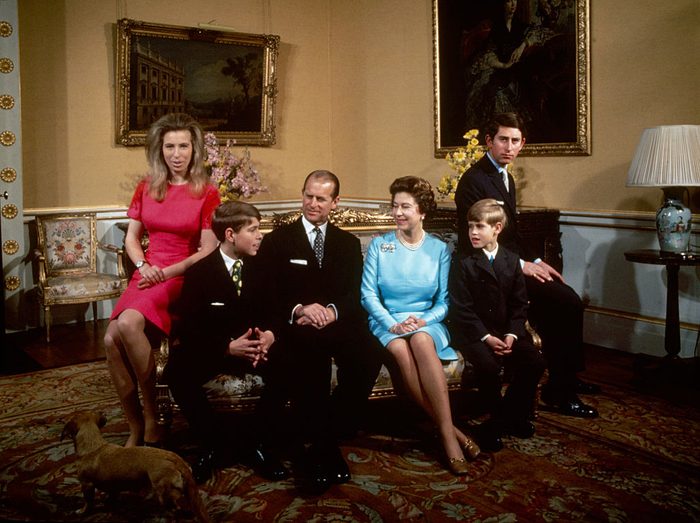
She had four children
Elizabeth had two children in quick succession following her wedding. “Like many couples at the time, they immediately started a family, with Prince Charles born a year after their marriage in 1948 and Princess Anne two years later,” Gullace says. “They took up their lives together in a way that ordinary people could relate to.” Prince Philip was still an officer in the Royal Navy, and Elizabeth took on the role of naval wife, living with him in Malta when he was stationed in the Mediterranean fleet.
Elizabeth’s two younger children, Princes Andrew and Edward, were born later in 1960 and 1964—after she had time to adjust to the role she had spent her young adulthood preparing for, yet didn’t expect to happen so soon. The two youngest princes were the first babies to be born to a reigning monarch since Queen Victoria had children in the 19th century.
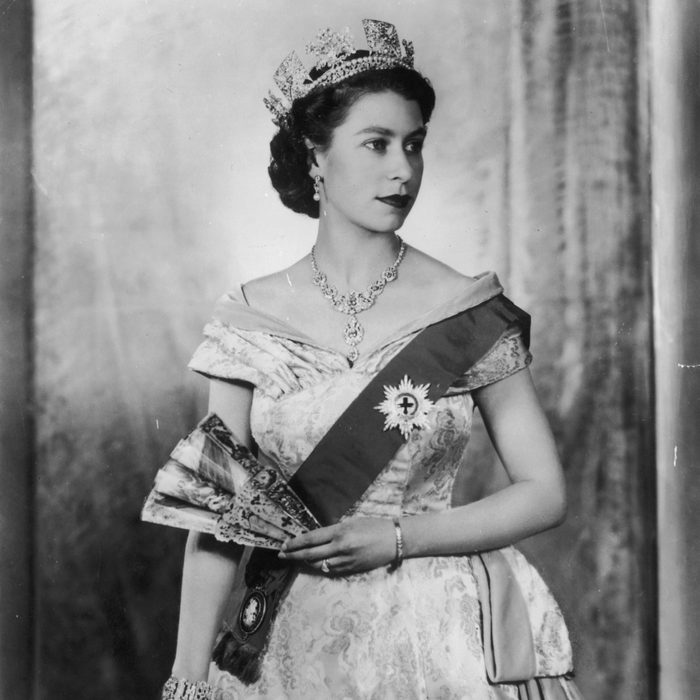
Elizabeth became queen at just 25 years old
On February 6, 1952, Elizabeth was on a royal tour in Kenya with Philip when her father died at the young age of 56, after a battle with lung cancer and years of poor health. “In Africa, on a romantic trip to a game reserve with Prince Philip, the princess learned of her father’s death and her own accession to the status of sovereign,” Gullace says. “British game hunter Jim Corbett, who was also staying in one of the reserve’s tree-top cabins, wrote in the logbook, ‘For the first time in the history of the world, a young girl climbed into a tree one day a Princess and after having what she described as her most thrilling experience, she climbed down from the tree the next day a Queen.'” As yet unaware of the events, Queen Elizabeth was one of the last to know she’d become queen—when she found out, the stunned Elizabeth immediately returned home to England.

Elizabeth handled the change better than Philip
The young couple’s idyllic early years “came to an abrupt end with the death of Elizabeth’s father, which destined her to become queen and derailed Philip’s naval career, as he had to swear allegiance to Elizabeth and take on the role of royal consort,” Gullace says. “While this put stress on their marriage, both Elizabeth and Philip were governed by a sense of duty. It was Philip, not Elizabeth, who balked at the change. But the two of them, with mixed feelings perhaps, nevertheless moved forward.”
Even though the princess didn’t expect to become queen so soon, she adapted to the situation with her now trademark stoicism. “Elizabeth handled becoming Queen at so young an age by embracing her destiny and relying on her own ingrained sense of duty to her subjects,” Gullace says. “She assumed the crown with extraordinary maturity and grace, despite the fact that it would upend the happiest time of her life when she and her young family lived as an ordinary military family on Malta.”
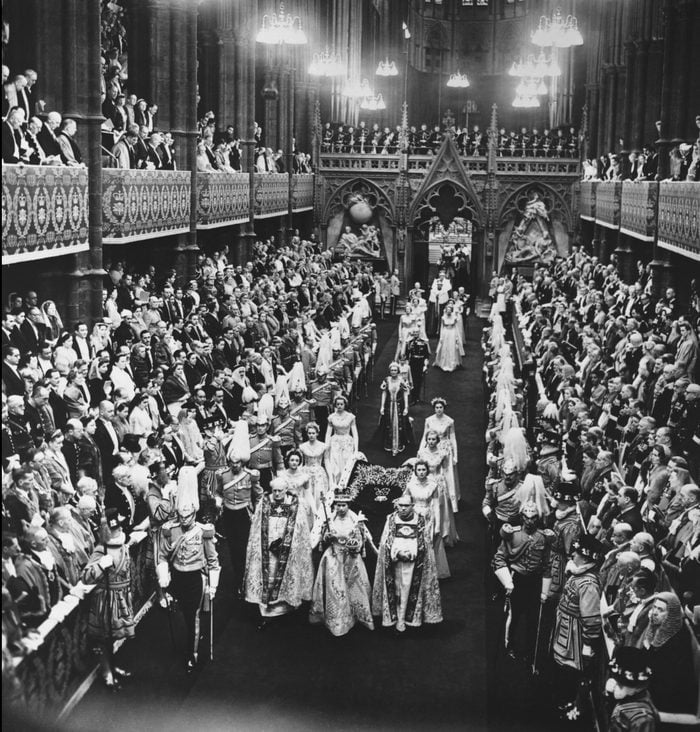
Queen Elizabeth’s coronation was modern—and traditional
First Elizabeth’s wedding, then her coronation became highlights for post-war Britain. She ascended the throne at the exact moment her father died; but in order to allow a period of mourning, the official coronation is traditionally months after the previous monarch has died. Elizabeth’s was held on June 2, 1953. “For 900 years, coronations had been held at Westminster Abbey, and the coronation of Queen Elizabeth II followed that long tradition,” Gullace says. “Yet, despite the familiar pageantry, hers was a modern monarchy, and her coronation was televised to 27 million viewers in the UK and millions more throughout the Commonwealth.” Queen Elizabeth wore both the famed St. Edward’s Crown and the Imperial State Crown, British crown jewels that are worth millions.
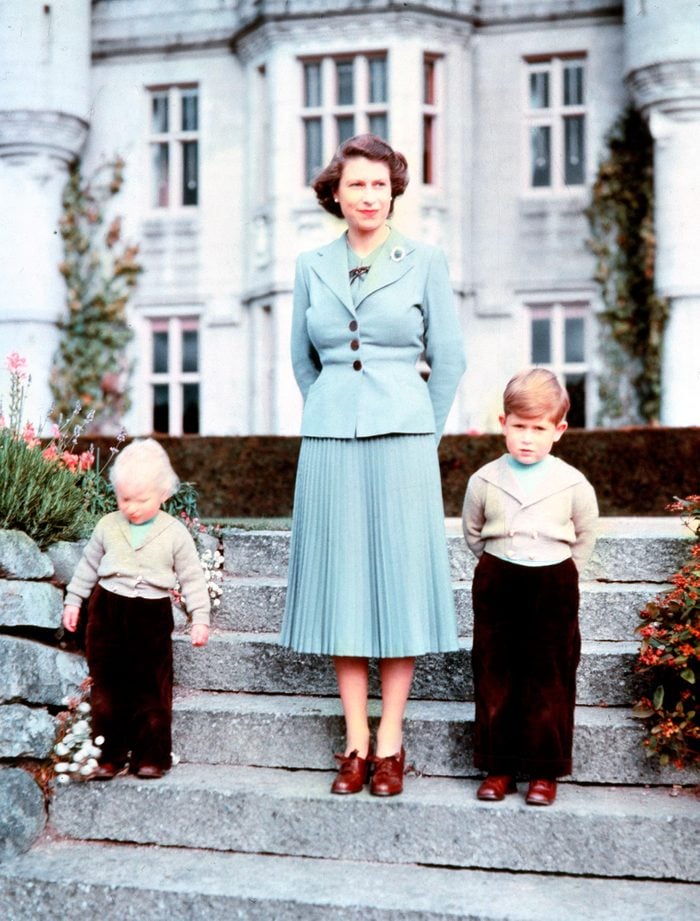
She was a hands-off mother
Even if she wasn’t warm-and-fuzzy, Queen Elizabeth wasn’t an uncaring mother, as she’s sometimes been portrayed. Rather, her new role as queen meant she often had to leave her children behind. “Queen Elizabeth had a busy schedule that limited the amount of time she spent with her children, especially her two eldest children, Charles and Anne,” says Carolyn Harris, historian and author of Raising Royalty: 1000 Years of Royal Parenting. Her duties, for those wondering, “What does the queen of England do?”, included extensive tours of the countries in the vast Commonwealth. Then, there was the matter of the children’s education. “As the children grew older, the queen and especially Prince Philip thought it was important that they attend school with other children rather than being educated at home,” Harris says. “The royal children were therefore away from home at boarding school for much of the year.” This backfired a bit for Prince Charles, though, as he did not have a positive experience at boarding school.
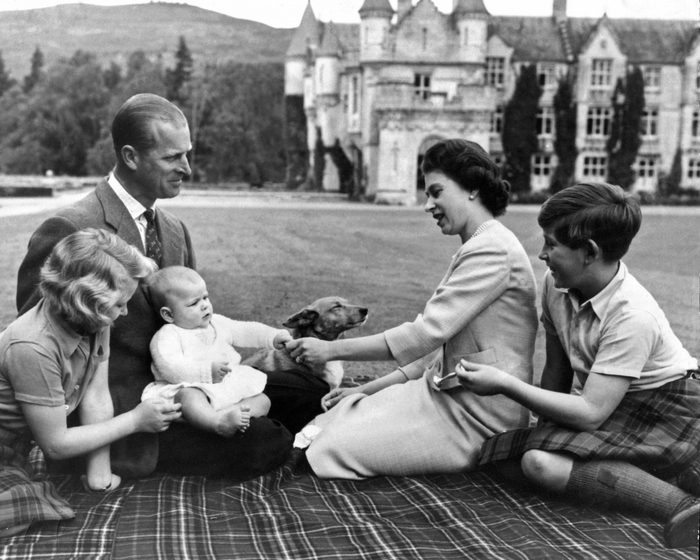
The Windsors had a strong family bond
Just as Elizabeth’s childhood was filled with a strong sense of family, so was her children’s, even if they weren’t always together. “Family photographs and films demonstrate that when the royal family was together, they enjoyed family holidays at Balmoral and Sandringham, and the Queen and Prince Philip spent quality time with their children,” Harris says. Princess Anne herself confirmed this in a 2002 BBC interview: “We as children may have not been too demanding in the sense that we understand what the limitations were in time and the responsibilities placed on her as monarch in the things she had to do and the travels she had to make. But I don’t believe any of us for a second thought she didn’t care for us in exactly the same way as any other mother did.”
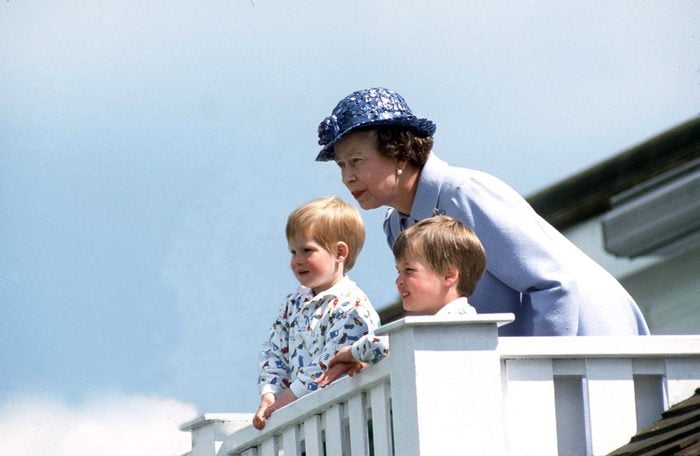
She had 8 grandchildren and 12 great-grandchildren
The queen revealed her softer side in the way she doted on her grandchildren and great-grandchildren. “The Queen enjoyed being surrounded by her extended family, including her grandchildren and great-grandchildren—her grandchildren have all spoken very highly of the queen,” Harris says. Her grandchildren include Prince Charles’s sons, Princes William and Harry; Princess Anne’s children, Peter Phillips and Zara Tindall; Prince Andrew’s daughters, Princesses Beatrice and Eugenie; and Prince Edward’s children, Louise and James. “The queen passed on her love of horseback riding and spending time in nature to her grandchildren,” Harris says. “She played an important role in mentoring Prince William for his future role [as king], inviting him for tea at Windsor Castle while he was attending the nearby Eton College.”
As for the queen’s great-grandchildren, Prince William has three children (Princes George and Louis, and Princess Charlotte), Prince Harry has two (Archie and Lilibet), Peter Phillips has two (Savannah and Isla), Zara Tindall has three (Mia, Lena and Lucas), Princess Eugenie has one (August) and Princess Beatrice has one (Sienna) as well. Got all that? If necessary, refer to the entire royal family tree, explained in one easy chart.
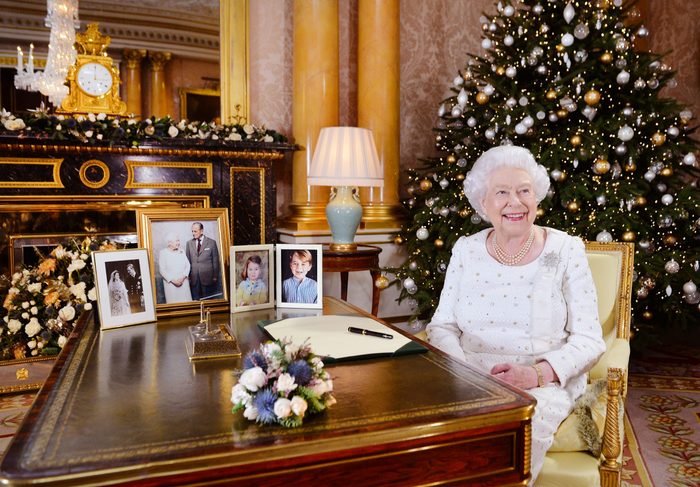
Her Christmas broadcast was an annual tradition
Over the years, watching Queen Elizabeth’s annual Christmas television broadcast had become a tradition for British families on Christmas Day, and doing the broadcast helped the queen maintain a sense of closeness to her people. “The Christmas broadcast is one of the few times when the Queen directly addressed the people of the United Kingdom and Commonwealth and shared her reflections on the year,” Harris says. Plus, the queen was carrying on a long-standing English tradition with the annual speech. “The queen’s grandfather, King George V, was the first monarch to deliver a Christmas broadcast over the radio [in 1932], and his devotion to duty and public service had a strong influence on his granddaughter,” Harris says. Elizabeth modernized the tradition with the first televised Christmas broadcast in 1957.
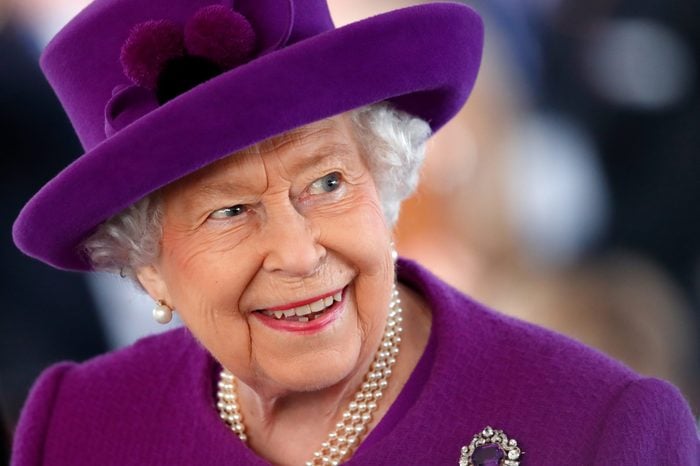
She was not the richest person in Britain
For all her influence, Queen Elizabeth was not the wealthiest person in the United Kingdom—and how much the queen was actually worth might be less than you would have expected. Although she no doubt lived in a world of privilege, she didn’t appear in the UK’s Sunday Times 2021 list of the 250 richest people in the country. According to the Times, she was worth about $480 million in personal assets at the time; Forbes estimated $500 million, but that was still way below the 2,674 billionaires on that magazine’s 2021 richest people list. Much of the queen’s money came from private income from her estates. Taxpayers do pay for official duties of the monarch, but Forbes estimates that amount is much less than the tourism and economy boost the royal family provides the country.
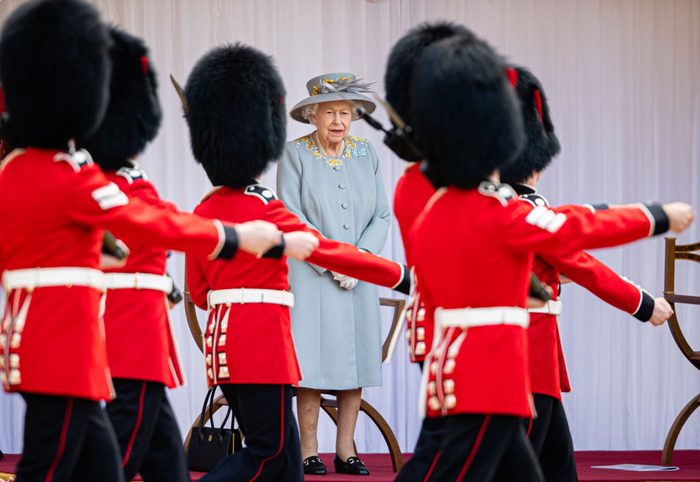
She celebrated her birthday twice a year
Queen Elizabeth celebrated her actual birthday privately on Apr. 21—and then again publicly in June. Why? “The modern tradition has very distinguished origins, combining the older British military custom of ‘Trooping the Colour,’ begun during the reign of Charles II in the 1660s, with the official marking of the monarch’s birthday, first done in 1748 for King George II,” Hughes says. “Colors” are standards or flags that were used as easily identifiable rallying points during battle; in 1760, Hughes says, the tradition of military parades to honor the sovereign’s birthday officially began.
As for the June date, “the modern custom of an additional summer birthday for the monarch can be traced back to the Queen’s great-grandfather, King Edward VII, who was born in November,” says Gavin Hughes, director of the Irish Conflict Archaeology Network at the Centre for Medieval & Renaissance Studies at Trinity College Dublin. “As the weather in Britain is generally temperamental around this time, the ‘Trooping of the Colour’ was moved back to the summer to mark the official birthday and accommodate the large crowds who turned up to view it.”
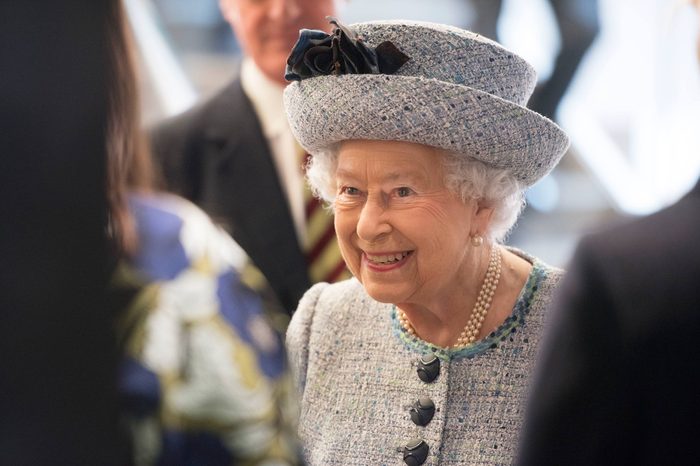
She had a few nicknames
Queen Elizabeth’s full name is Elizabeth Alexandra Mary. But back when she was still Princess Elizabeth, she was called Lilibet by close family—she had trouble pronouncing her own name when she was a young girl, and that’s how it came out—which is why her grandson Prince Harry and his wife, Meghan, chose it for their daughter’s name. The queen’s husband, Philip, was known to call her Cabbage. Then there are her great-grandchildren. When Prince George was two and a half, he called her “Gan-Gan,” the prince’s mother, Catherine, the Duchess of Cambridge, said in the documentary The Queen at Ninety.
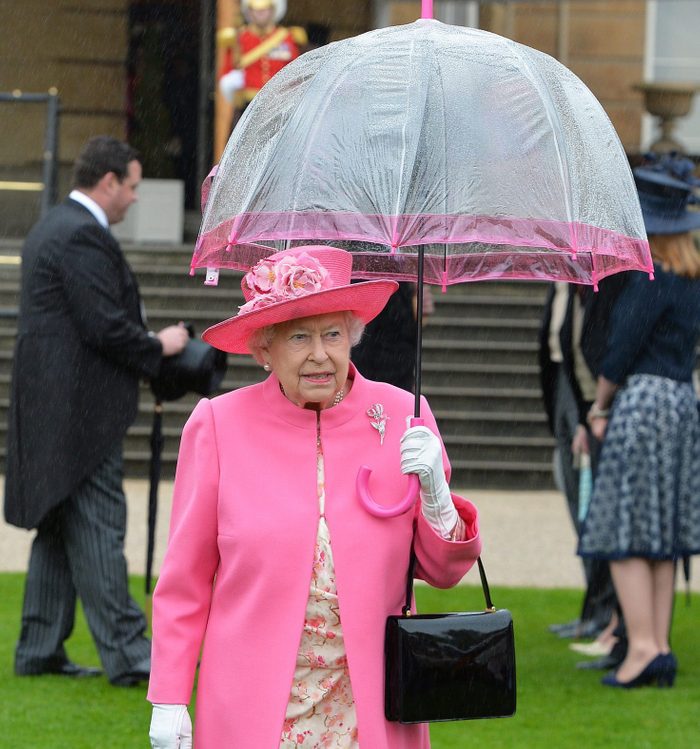
She dressed with a purpose
“From the moment she woke up, virtually every decision she made was an act of service, including choosing that day’s outfit and umbrella color, both of which ensured her visibility in crowds,” Kozlowski says. The queen has worn every color of the rainbow, from yellows, oranges, purples and blues to even fluorescent-colored frocks. “She needs to stand out for people to be able to say ‘I saw the queen,'” her daughter-in-law, Sophie, Countess of Wessex, said in the documentary The Queen at 90. “Don’t forget that when she turns up somewhere, the crowds are two, three, four, 10, 15 deep, and someone wants to be able to say they saw a bit of the queen’s hat as she went past.”
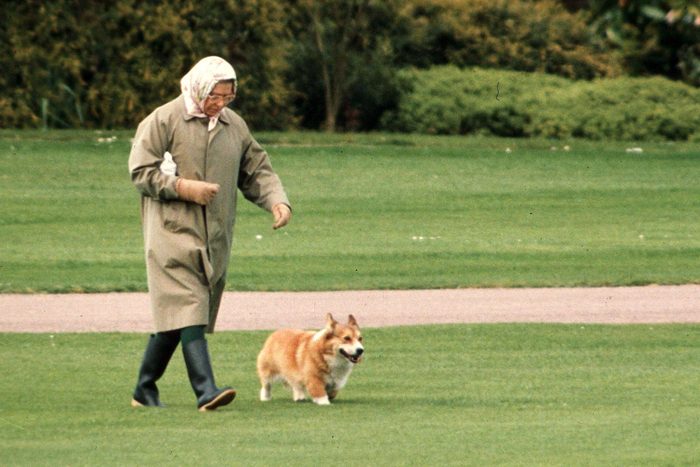
She was a dog lover
We’ve all seen the classic images: Elizabeth accompanied by her iconic corgis. But do you know the real extent of the love for Queen Elizabeth’s corgis? She received her first, Susan, as a birthday present when she turned 18. She’s owned at least 30 Pembroke Welsh corgis, all descendants of Susan, the last of which, named Willow, died in 2018. She’s owned other breeds as well; most notably, the royal family has bred “dorgis”—a mix between corgis and dachshunds. “The Queen always loved spending time with dogs and going for long walks with her dogs on the royal estates,” Harris says.
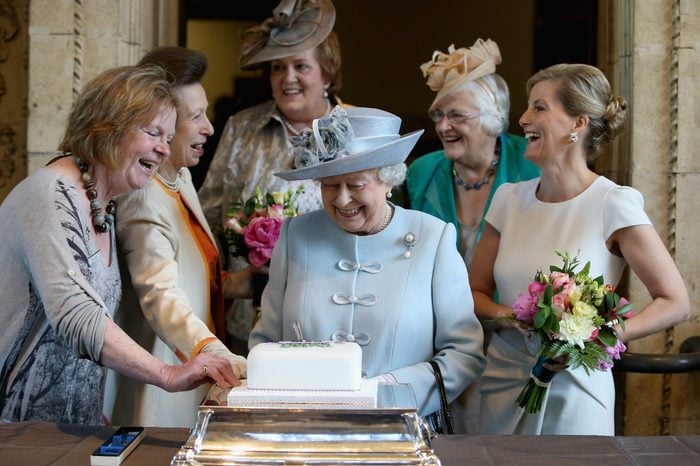
She joked about her age
If you still don’t believe the buttoned-up monarch had a sense of humor, you haven’t seen Queen Elizabeth come up with a quick retort. Case in point: While introducing her at the Commonwealth Heads of Government meeting in 2015, Canadian Prime Minister Justin Trudeau reverently said, “I am deeply mindful of Your Majesty’s long and tireless service.” After coming to the microphone, the Queen deadpanned, “Thank you, Mr. Prime Minister of Canada, for making me feel so old.” Her off-the-cuff remark elicited a huge laugh from the audience, reports The Royal Family official website. “Elizabeth embraced what longevity researchers call the ‘U-bend of life’ theory: becoming happier, lighter and more generally satisfied with life as she ages,” Kozlowski says. “She was similar to her long-lived mother in this regard, who made it to 101 while frequently reminding younger souls that ‘things are much more fun past 80.'”
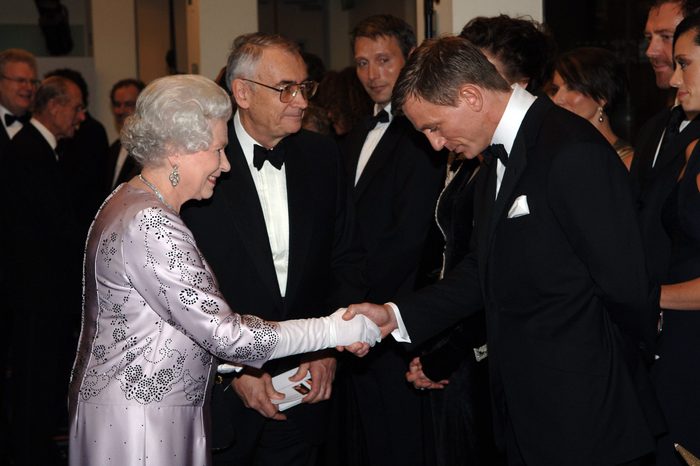
She acted in a James Bond scene
The lighthearted queen starred opposite Daniel Craig in a James Bond skit to open the 2012 London Olympics. According to royal dresser Angela Kelly in her book The Other Side of the Coin: The Queen, the Dresser and the Wardrobe, the director inquired whether he could use her likeness—to which Elizabeth responded that she wanted to appear in it herself, and even insisted on having a speaking role. “I asked whether she would like to say, ‘Good evening, James,’ or, ‘Good evening, Mr. Bond,'” Kelly wrote. “She chose the latter, knowing the Bond films.” In the skit, after the queen and James Bond left Buckingham Palace on a helicopter, a real helicopter appeared live over the Olympic stadium, and the queen appeared to parachute out—but she left that one to a stunt double.
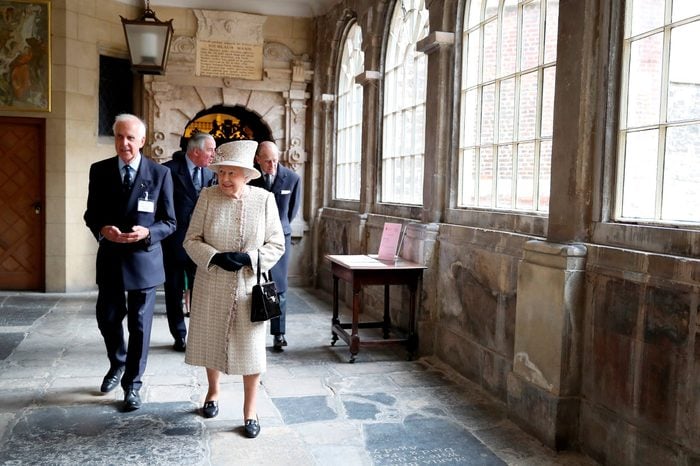
She only gave one sit-down interview in her entire reign
Despite burning questions about her personal and family life as well as bigger travesties like colonialism, Queen Elizabeth II was constantly surrounded by controversies. However, she rarely gave press interviews. “It’s one of her all-time greatest achievements,” Kozlowski says. “With every family and political drama she’s been through, the temptation to tell ‘her side of the story’ to the press must have been unbearable. But the queen comes from a generation that truly believes the maxim, ‘least said soonest mended’—a self-protecting philosophy that time can heal much more and much faster than any sensational interview or impulsive tweet.” She did break with tradition, however, to give the BBC her first sit-down TV interview in 2018, on the occasion of the 65th anniversary of her coronation.
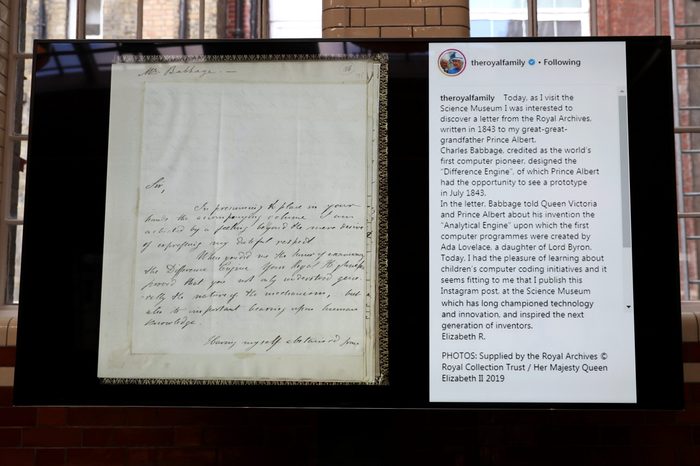
The Queen first posted on Instagram in 2019
Lest she be accused of not being modern, Queen Elizabeth had an active presence on social media. She even published her first Instagram post from the handle @theroyalfamily in 2019 while at the Science Museum in London: Tying the new medium together with the old, her post included a photo of an 1843 letter from the world’s first computer pioneer, Charles Babbage, to the Queen’s great-great-grandfather, Prince Albert (aka husband to Queen Victoria), who was very interested in scientific progress. “Today, I had the pleasure of learning about children’s computer coding initiatives and it seems fitting to me that I publish this Instagram post, at the Science Museum which has long championed technology, innovation and inspired the next generation of inventors,” she wrote, signing it “Elizabeth R.” In 2014, the Queen also tweeted for the first time from the Science Museum.
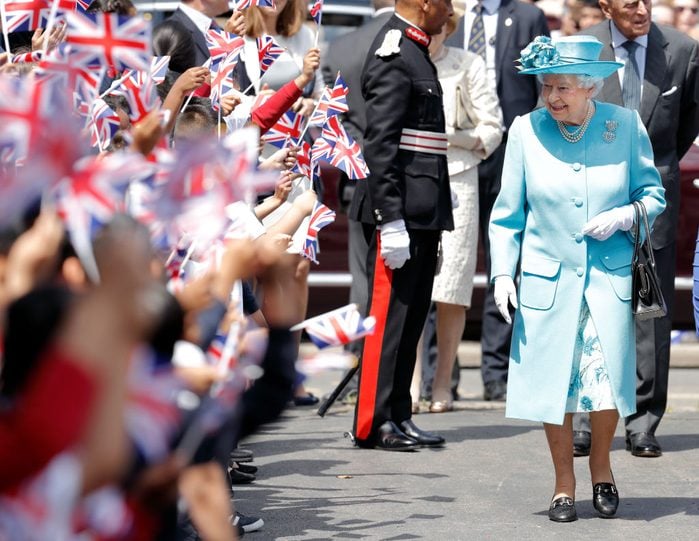
But the queen’s appeal was based on tradition
As fun as it is to think of the queen on Twitter, Elizabeth inspires love and devotion because she represents the history of England—which could also be why Queen Elizabeth and Princess Diana, who was incredibly popular but also incredibly modern, clashed. “I think the queen’s greatest asset was not so much her modernity as her connection to the past—the monarch’s traditionalism, her sense of duty to her people and to the people of the Commonwealth, and her participation as a volunteer in World War II all connect her with iconic moments in British history,” Gullace says. “While Prince Philip famously tried to modernize the royal family, bringing in television crews and displaying their home life to the media, I think that the queen, in her old age, was a reassuring presence precisely because of her connection with tradition, the past, and former glory.”
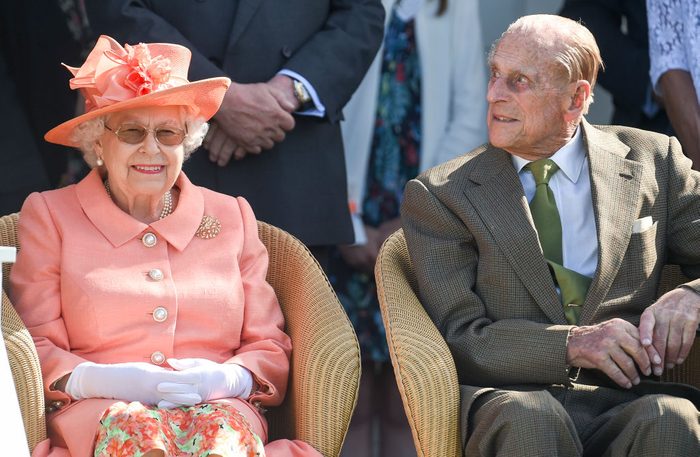
She was the longest-married British monarch
Helping the queen along the way, of course, was her husband Philip, Duke of Edinburgh, until his death in April 2021 at age 99. Queen Elizabeth was the first British monarch to celebrate her 60th “diamond wedding” anniversary, in 2007; they were married for 73 years in total. “The queen described Prince Philip as her ‘strength and stay’ at the time of their Golden [50th] Wedding anniversary,” Harris says. “When the queen traveled outside the United Kingdom, she was almost always accompanied by Prince Philip.” In addition to his assistance with royal duties, the prince had a demeanor that balanced out the queen’s. “Prince Philip’s sense of humor and outgoing personality complemented the queen’s more reserved temperament,” Harris says. “Prince Philip encouraged efforts to modernize the monarchy, such as televising the coronation or inviting documentary cameras to cover the daily life and work of the royal family,” while Elizabeth maintained the family’s sense of tradition. “Over the years, their long marriage became iconic for its stability, affection, and mutual respect,” Gullace says.
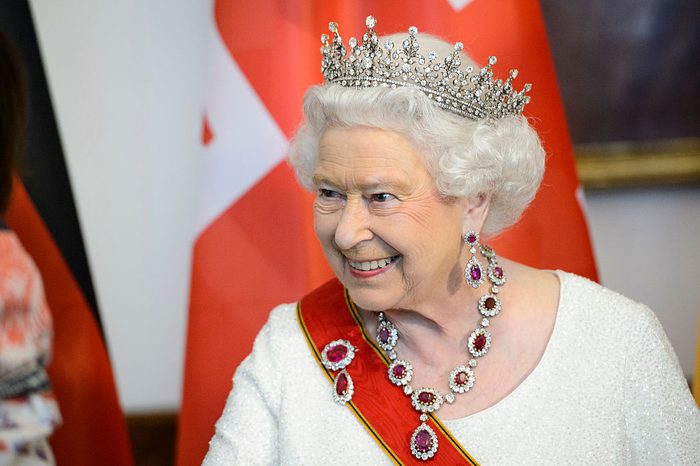
She was queen for nearly 70 years
On February 6, 2017, Queen Elizabeth II became the first British monarch to reign for 65 years, celebrating her Sapphire Jubilee. To mark the momentous occasion there were new coins, a new stamp, gun salutes, and a re-released portrait taken by British photographer David Bailey, where the Queen is wearing a suite of sapphire jewels she received as a wedding day gift from her father, King George VI, in 1947. She is the longest-reigning monarch in British history, an occasion marked by a Platinum Jubilee celebration that took place June 2–5, 2022. If you’re wondering what will happen now that Prince Charles is king, the answer is: The queen will be a tough act to follow. “It will be very hard for Prince Charles to follow her, since her longevity and connectedness to Britain’s history are part of what makes her so beloved,” Gullace says. However, in honor of the queen, we’ll have to adapt to that change, just as she did many times during her storied reign.
Sources:
- The Royal Family official website: “Her Majesty the Queen”
- The Royal Family official website: “Diary of events in the early life of The Queen”
- The Royal Family official website: “Swan Upping”
- The Royal Family official website: “50 facts about The Queen’s Coronation”
- The Royal Family official Instagram: Science Museum post
